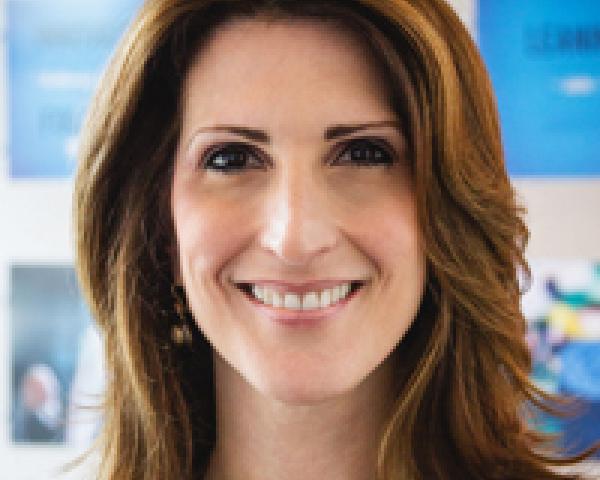Many people in the insurance industry fantasize about creating a customer experience that rivals those of other categories, like retail, or that of specific companies, like Zappos. But some may say the fantasy is just that. After all, insurance and shoes are not the same when it comes to demand, so we need to set our expectations lower. It’s a valid point of view.
However, many things have been achieved in the world that, at one point, were thought of as just fantasy. Breaking the four-minute mile, achieved by Roger Bannister in the 1950s, is a favorite example. Bannister, who passed earlier this year, always will be remembered for what he taught the business world. At Maddock Douglas, we have a phrase that sums up this lesson: “Impossible is only an opinion.”
Bannister took impossible out of the equation by mentally visualizing that a four-minute mile
was possible. This led to a series of behaviors and training that ultimately got him there. Then, once he broke through, many others did, too. In sports, most would agree that attitude is the single most important key to success — it was the missing piece.
So how does his breakthrough relate to the fantasy of a world-class customer experience within insurance? We need to first let go of the barrier of “impossible.” That will give us the open mind to look at what’s truly happening within the customer experience in another way.
A helpful framework for looking at the customer experience is the Experience Cycle, developed by
Dubberly & Evenson in 2008. In this framework, a customer’s interaction with a product or service is broken down into five phases: Connect & Attract, Orient, Transact, Extend & Retain and Advocate.
See also: What Really Matters in Customer Experience
Let’s look again at the contrast between products like shoes and products like insurance. The biggest difference between the two is demand: For the former, it’s already there; for the latter, there’s a need, but demand must be cultivated.
Further, you can’t pay for insurance with just money like you can with shoes. You must also pay for it with two other currencies: information and time. Information is needed to assess the risk, and, depending on what kind of insurance is being purchased, that can be quite extensive (e.g., personal financial data, credit data, health data). Then, if that information is not at the ready, it takes time to get it.
That’s our missing piece.
I am not suggesting eliminating the need for data, because we know what happens when we take that out of the equation. Prices go up. Many attempts have been made to offer higher-priced products that require little or no information, but uptake is generally not impressive. Rather, we need to help consumers understand why we need this information, help them get it efficiently and in a more pleasant way — and perhaps give them something more immediate in exchange for it (e.g., feeding it back in a helpful report about what it means to their insurance rates and how they can improve).
The part of the cycle that this activity falls under is Orient. The Orient phase is most often skipped completely by insurance companies, expecting people to go right from the Connect & Attract phase to the Transact phase. Then, when consumers are hit with all these requirements, they get turned off and maybe even bail out. This can happen in an online environment, for sure, and it can also happen in a face-to-face sales environment if the agent hasn’t set expectations correctly.
So in what ways might we fill in the missing piece? First, we must understand what questions must be answered in the consumer’s mind to get oriented and prepared for what happens next. These include:
- Do I really need insurance?
- If so, what kind?
- How much do I need?
- How are my costs determined? How much will it cost?
- What does the process look like?
- How much time and information do I really need to give?
- How will you use my data? Will it be used against me now or down the road?
Next, we can take pages out of the lesson books of other categories. A few of my favorite examples of successful orientation are:
- Credit Karma: Here’s a service that not only aggregates your various credit reports but also breaks your score down into key behaviors that help people understand how to improve their score, and how it’s used by credit card companies and lenders.
- Domino’s Pizza: The tension of not knowing what’s happening with your order or when it will arrive can be maddening when you’re hungry. So Domino’s created the “where’s my pizza” function, enabling someone to see exactly when it’s being made, in the oven and in the car on the way. For users, knowing that they will have visibility into the process is very comforting.
- RealAge Test: This test, taken by millions of people, engages the user in a series of questions and instantly delivers back a “real age” based on health and risk factors. For example, your calendar age may be 40, but your “real age” could be 38. This is a socially engaging way to help orient people around the behaviors that lead to longevity and health, while also leading them to understand risk factors.
While the above are somewhat elaborate digital experiences, orientation can also happen with simple FAQs, videos, chat and many other easy mechanisms. This is an area to unleash your innovation team on for sure.
See also: 4 Insurers’ Great Customer Experiences
The key is, we must fill in the missing piece. Orient is undernourished in the industry, and the uniqueness of the heavy data requirement means it needs
even more love than if we were selling shoes. Proper orientation means the transaction has a much greater chance of happening.








